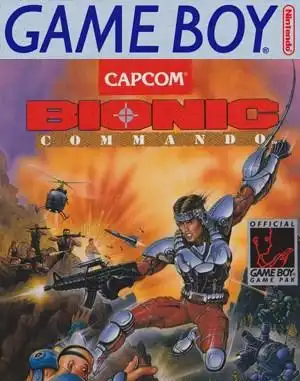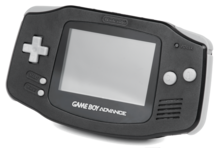Remember a time when platformers were defined by how you jumped? Then along came a game that ripped up the rulebook, replacing your legs with a grappling hook attached to a metal arm. That game was Bionic Commando, and for many retro gamers, it offered a truly unique challenge and an unforgettable experience.
Capcom's innovative title first swung into arcades in 1987, but it was the significantly different 1988 NES version that truly captured the hearts (and frustrations) of a generation. Forget simple running and jumping; mastering the bionic arm was the key to survival.
What Made Bionic Commando So Different?
At its core, Bionic Commando is an action-platformer with a twist: you literally cannot jump. Your primary mode of vertical and horizontal traversal is the bionic arm. This mechanical limb extends, grapples onto ceilings, platforms, and even some enemies, allowing you to swing across chasms, pull yourself up ledges, and interact with the environment in ways few other games dared to explore at the time.
This single mechanic defined the entire game. Levels were designed specifically around the arm, requiring precision, timing, and strategic thinking that went far beyond simple button presses. It was a steep learning curve, but incredibly rewarding once you got the hang of swinging through enemy-infested zones.
The No-Jump Challenge: Frustration and Mastery
Let's be honest, learning to live without a jump button was tough! Countless players tumbled into pits or got stuck trying to make a seemingly simple swing. The difficulty was legendary, particularly in later areas where complex sequences of grappling were required under enemy fire.
However, overcoming these challenges felt incredible. Successfully navigating a tricky section using only the arm was a badge of honor. It forced players to think differently about level design and movement, fostering a unique sense of accomplishment. The game demanded patience and practice, qualities that defined many challenging retro titles.
A Tale of Two Commandos: Arcade vs. NES
It's worth noting that the arcade Bionic Commando and the much-loved NES version were quite different games, despite sharing the core bionic arm mechanic.
- Arcade: More of a straightforward, linear action game focused on high scores and quick runs. It had less emphasis on exploration.
- NES: Expanded significantly into a non-linear adventure with an overhead world map, distinct action and neutral areas, communication rooms (some with surprisingly detailed story elements for the time), and even RPG-lite elements like equipment upgrades. This is the version most retro fans remember fondly.
The NES version's deeper structure, intriguing (if a bit convoluted) plot involving rescuing Super Joe and stopping the nefarious "Badds" (a localized name for a group with thinly veiled Nazi ties), and memorable character interactions set it apart as a true home console classic.
Ports, Remakes, and Lingering Controversy
Beyond the arcade and NES, Bionic Commando saw ports to various home computers like the Commodore 64, Amiga, and PC. Quality varied wildly between these versions, with some ports struggling to replicate the feel and flow of the original. The European C64 version, with its fantastic soundtrack by Tim Follin, is often cited as a standout among the home computer ports.
Years later, the series was revitalized with Bionic Commando Rearmed (2008), a fantastic 2.5D remake of the NES game that stayed true to the original's spirit while adding modern polish, co-op, and enhanced gameplay features. This remake served as a prequel to a full 3D sequel in 2009.
One aspect that often comes up is the game's original Japanese context. The Famicom version, titled "Hitler no Fukkatsu: Top Secret" (The Resurrection of Hitler: Top Secret), explicitly featured Nazi symbols and had a final boss who was, well, Hitler. Localization for the Western market changed names, removed symbols, and altered the final boss to "Master-D," though his appearance and violent demise remained surprisingly similar. This historical footnote adds another layer to the game's legacy.
Why We Still Swing Back
Bionic Commando endures because it was bold and different. It challenged players with a unique mechanic and rewarded mastery. The NES version, in particular, offered a compelling world, memorable music, and a sense of adventure that stuck with players long after they turned off their consoles. It wasn't just a game; it was an experience that taught you perseverance and the joy of overcoming seemingly impossible obstacles with nothing but a well-aimed grapple.
Playing Bionic Commando Today
Feeling nostalgic? You can still experience Bionic Commando!
- Bionic Commando Rearmed is available on digital storefronts like GOG (https://www.gog.com/) and Steam, offering a modern way to play the classic NES adventure.
- Finding the original NES version might involve emulation (requiring legal ownership of the game) or tracking down classic hardware.
- Some PC ports of the original arcade game can be explored via DOSBox (https://www.dosbox.com/) or found on platforms like Archive.org (https://archive.org/) for historical preservation purposes (always check local laws and licenses).
FAQ
Was Bionic Commando really the first game with a grappling hook mechanic?
While grappling hooks appeared in earlier games like Roc'n Rope (also by Capcom's Tokuro Fujiwara), Bionic Commando is widely credited with popularizing the mechanic as the primary form of character movement in a platformer.
Is the NES version of Bionic Commando the best one?
The NES version is arguably the most iconic and beloved due to its expanded world and story. However, Bionic Commando Rearmed is often considered the best modern way to experience that core gameplay. The "best" depends on whether you prefer authentic retro challenge or polished modern design.
Why can't you jump in Bionic Commando?
The "no jumping" rule was a deliberate design choice by the developers to force players to rely entirely on the bionic arm, creating the game's unique challenge and identity. It's the defining characteristic!
What's the story about Hitler in Bionic Commando?
In the original Japanese Famicom version, the final boss was explicitly a resurrected Adolf Hitler, and the game featured Nazi imagery. This was heavily localized for Western releases, changing names and removing symbols, though the boss's appearance remained similar.
So, whether you're a veteran who conquered Area 8 back in the day or a newcomer curious about this quirky classic, swinging into the world of Bionic Commando is a retro gaming experience unlike any other. Give it a try – just don't forget to grapple!


